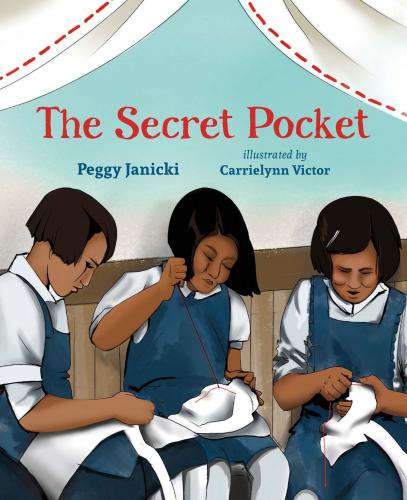★“Captures the sympathy of readers and holds their attention...An age-appropriate telling by an Indigenous creative team of a tragic historical period.”—School Library Journal, starred review
The true story of how Indigenous girls at a residential school sewed secret pockets into their dresses to hide food and survive.
Mary was four years old when she was first taken away to the Lejac Indian Residential School. It was far away from her home and family. Always hungry and cold, there was little comfort for young Mary. Speaking Dakelh was forbidden and the nuns and priest were always watching, ready to punish. Mary and the other girls had a genius idea: drawing on the knowledge from their mothers, aunts and grandmothers who were all master sewers, the girls would sew hidden pockets in their clothes to hide food. They secretly gathered materials and sewed at nighttime, then used their pockets to hide apples, carrots and pieces of bread to share with the younger girls.
Based on the author's mother's experience at residential school, The Secret Pocket is a story of survival and resilience in the face of genocide and cruelty. But it's also a celebration of quiet resistance to the injustice of residential schools and how the sewing skills passed down through generations of Indigenous women gave these girls a future, stitch by stitch.
“This important story brings attention to the resilience, ingenuity, and strength of the Indigenous children who were taken away to residential schools… Highly recommended.”
“A powerful example of Indigenous resistance, brilliance, and intergenerational healing. The story illuminates that resilience is rooted in language, culture, and relationships. The Secret Pocket is suitable as a read-aloud for elementary students and as a critical thinking resource for secondary and intermediate students.”
“Use(s) the blues and greens of nature to effectively capture warm family scenes in contrast with the dull grass and browns of school life.”
“Victor's artwork is emotional and offers realistic glimpses at the differences between the warmth happiness experienced at home, and the stark reality of life in the residential school.”
“An engaging and important story, this book is highly recommended for home, public, and school libraries.”
“Imbued with marvelous details and remarkable balance as it describes both hardship and resilience… Heartrending and heartening.”

